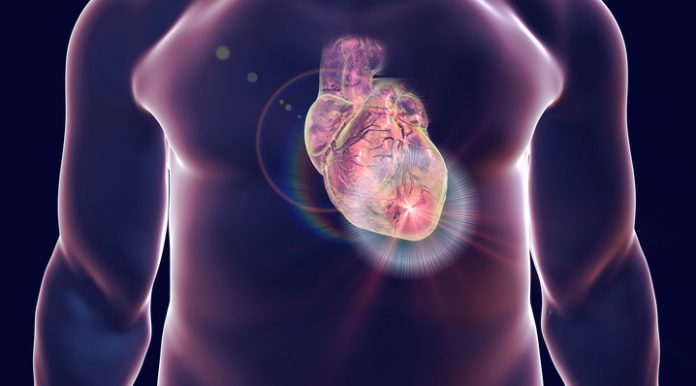
New research from the University of Alabama Birmingham (UAB) has shown that injecting bioengineered heart muscle cell spheroids derived from human induced pluripotent stem cells (hiPSCs) into pig hearts after a heart attack significantly improved cardiac function and reduced the size of the infarcted area. The findings, published in Circulation Research, provide a new pathway for developing needed post-heart attack therapies given half of all patients with heart failure die within five years.
The study was led by Jianyi “Jay” Zhang, MD, PhD, and Lei Ye, MD, PhD, at UAB, who genetically modified the hiPSCs to overexpress cyclin D2 and knock out human leukocyte antigen classes I and II (KO/OEhiPSCs). The goal was to improve the efficacy of transplanted cells while reducing the potential for immune rejection.
“It is widely acknowledged that the infarct size is linearly related to the severity of post-infarction left ventricle remodeling and the occurrence of heart failure,” said Zhang, a professor of medicine and biomedical engineering at UAB. “In our current study, at week 4 after ischemia/reperfusion, we observed a significant 35.8 percent decrease in the infarct area in the hearts treated with the KO/OEhiPSC-cardiomyocyte spheroids compared with those treated with basal medium and a significant reduction compared with wildtype-hiPSC-cardiomyocyte spheroid-treated pigs.”
A surprising finding of their work, the researchers noted, was the proliferation of endogenous heart muscle cells in the pig hearts that resulted from the injection of the KO/OEhiPSC-cardiomyocyte spheroids. One of the hurdles to treating heart failure is that mammalian heart muscles lose their ability to divide shortly after birth, which results in the heart not having the ability to heal itself in the scar area after a heart attack. Previous attempts to introduce new heart muscle cells into the heart have been thwarted by the failure of cells to engraft and grow.
Yet, while the spheroids used in this study failed to persist, the researchers instead discovered a significant increase in the proliferation of endogenous pig cardiomyocytes, preexisting heart muscle cells that can’t divide in adult hearts. The proliferating cardiomyocytes showed increased expression levels of cellular proliferation markers, expressing genes for DNA replication. Further, the pig cardiomyocytes showed upregulation of three different signaling pathways: the Mitogen-Activated Protein Kinase (MAPK) pathway, the HIPPO/YAP pathway, and the Transforming Growth Factor Β (TGFb) pathway.
Following this, the investigators then analyzed the heart cells for cell-surface receptors that are associated with the three pathways, looking for differential extracellular protein expression of proteins that interact with those cell-surface markers receptors but did not find differential expression of the extracellular proteins in the endogenous cardiomyocytes. This suggested that the enhanced proliferation of the endogenous heart muscle cells might instead be due to extracellular proteins produced by the injected KO/OEhiPSC-cardiomyocytes.
The proliferation of these endogenous cardiomyocytes was linked to the secretion of a protein called follistatin by the transplanted cells. Follistatin, an autocrine glycoprotein, was found to significantly promote the growth of cardiomyocytes in both in vitro and in vivo experiments. In a mouse model of heart attack, injections of follistatin also stimulated the proliferation of adult heart muscle cells. The researchers believe that follistatin activates key signaling pathways, such as the HIPPO/YAP pathway, which are involved in cell growth and repair.
“To our knowledge, this is the first report demonstrating that follistatin promotes the proliferation of hiPSC-cardiomyocytes and cardiomyocytes from adult mammalian hearts,” Zhang said. “The mechanisms by which follistatin activates cardiomyocyte proliferation have yet to be deciphered.”
The current study builds on earlier research from Zhang’s lab, which demonstrated the potential of cyclin D2-overexpressing cardiomyocytes for heart attack recovery in animal models. By using KO/OEhiPSC-derived cardiomyocytes in the current large-animal model, the researchers have addressed important challenges related to immune rejection and therapeutic efficacy.
“This highlights the significant potential of KO/OEhiPSC-cardiomyocytes to stimulate endogenous cardiomyocyte proliferation in the hearts of adult patients,” Zhang said. The team hopes this approach can be translated into the clinic in the future.













